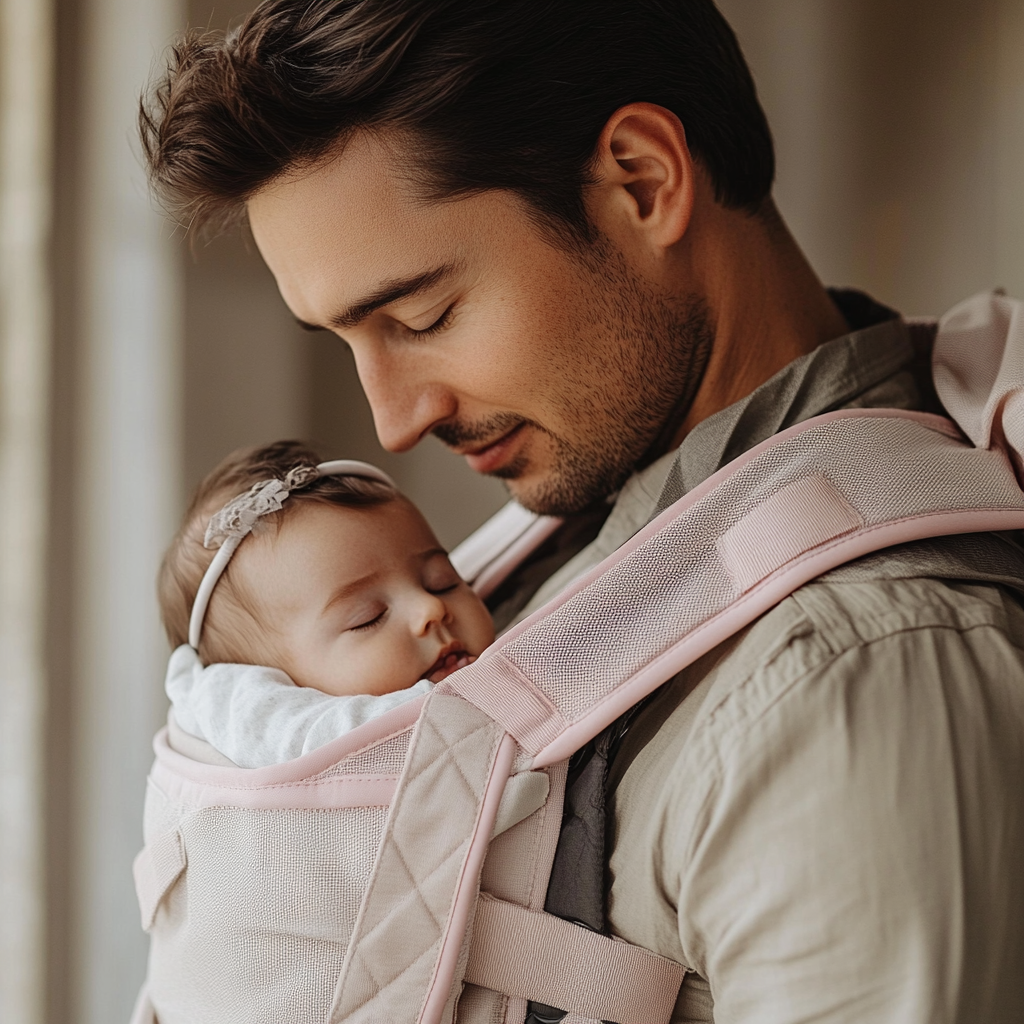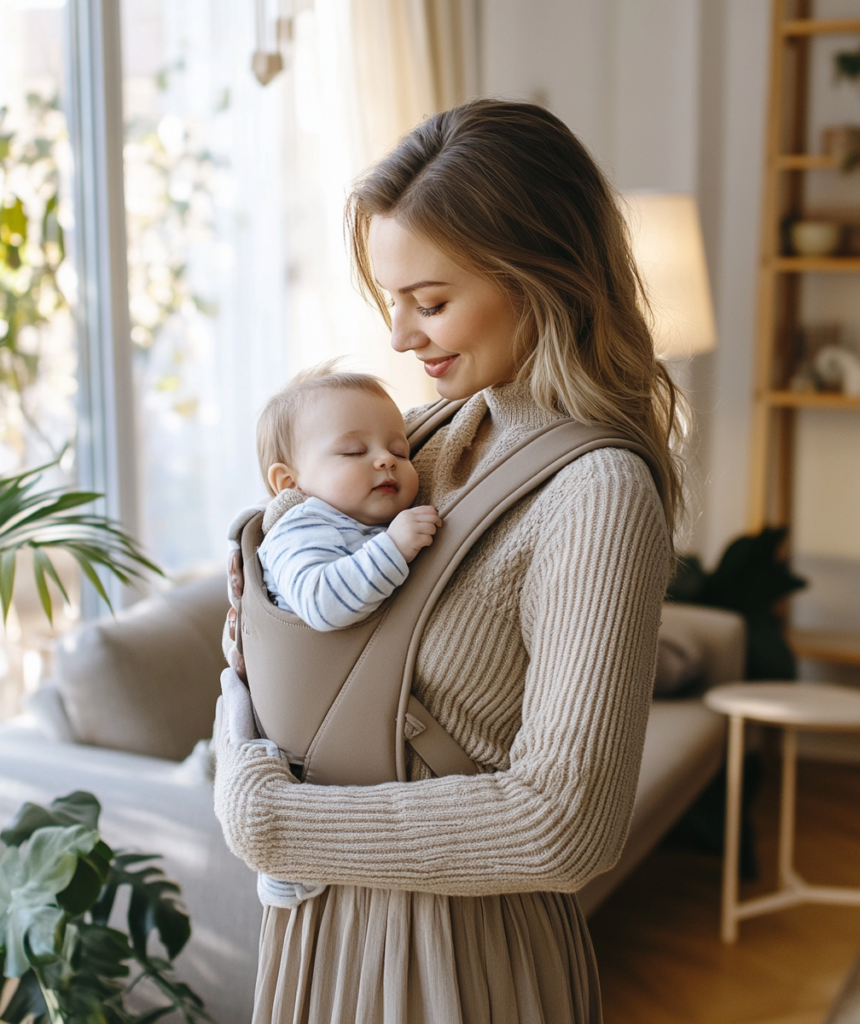A Brief History

The Science-Backed Benefits of Babywearing
• Promotes Bonding and Attachment: Babywearing fosters a secure attachment between caregivers and infants by creating a nurturing, close environment. This close contact strengthens the emotional bond between parent and child, which is essential for healthy development. The simple act of being held helps strengthen this connection.
• Boosts Oxytocin: Babywearing stimulates the release of oxytocin, also known as the “love hormone,” in both parents and babies. This hormone is associated with parental caregiving behavior and infant development.
• Enhances Responsiveness: When babies are close, parents are more attuned to their cues, enabling quicker responses to their needs. This responsiveness makes babies feel heard, loved, and more confident.
• Supports Breastfeeding: The continued close contact that babywearing provides encourages breastfeeding. It allows for easier and more frequent feeding, which helps establish and maintain a good milk supply.
• Encourages Better Sleep: Babies who are carried tend to sleep better, resulting in more restful nights for both babies and parents.
• Reduces Crying: Research suggests that carrying babies can reduce fussing and crying, particularly during evening hours. One study showed that carrying babies for three hours a day reduced crying and fussing by up to 51 percent during the evening hours.
• Improves Mental Health: Babywearing can alleviate symptoms of postnatal depression and anxiety by providing a calming effect and boosting oxytocin levels. It also enhances the paternal role, reduces stress, and improves responsiveness in fathers.
• Supports Physical Development: Being carried upright with full body support is beneficial for physical development, providing similar advantages to “tummy time”. Babywearing can also assist with temperature and breathing regulation, particularly in newborns and premature babies.
Additionally, an upright position can help babies with reflux or digestive issues.
• Cognitive and Emotional Development: Being in a carrier allows babies to see and engage with the world around them and interact face-to-face with the caregiver. This promotes cognitive and emotional development.
• Aids Hip Development: When done correctly, babywearing can support healthy hip development. The ideal position is with the baby’s hips flexed and abducted, resembling an “M-position,” which can help reduce the risk of hip dysplasia.
• Prevents Positional Plagiocephaly: By minimizing the time babies spend lying on their backs, babywearing can help prevent positional plagiocephaly, a condition affecting the shape of a baby’s head.

Types of Baby Carriers

Safety First: What to Look For
• Supported back: The carrier should be tight enough to prevent gaps but not so tight that it restricts movement.
- Ensure the carrier fits properly and is the correct size for your child.
- Check straps, buckles, and zippers before each use.
- Always make sure your baby is buckled in securely before walking around.
- Bend your knees when picking things up, to avoid falls and back injury.
- Make sure your baby’s knees are spread apart, with their legs wrapped around your body, and their hips bent so their knees are higher than their bottom, creating the healthy “M” position.
- Avoid outward-facing carriers for the first six months to promote optimal hip development.

When Can You Start Babywearing?
Final Thoughts

Disclaimer: Always follow the manufacturer’s instructions for your specific baby carrier. If you have any concerns, consult with a healthcare professional or babywearing expert.






